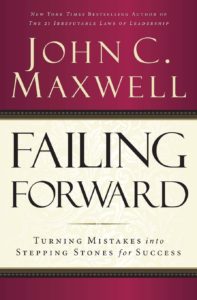
Great things can happen when you don’t care who gets the credit – Mark Twain
A Randstad USA survey revealed some surprising insights and statistics about how employees view their managers. Here are a few of their key findings:
- Only 53% of employees feel their boss values their opinion
- Only 35% feel inspired by their boss
- 25% of employees believe they can do a better job than their boss
- 17% say their boss takes credit for their work
- Both younger employees (aged 24-35) and females tend to be uncomfortable challenging their managers- about 35% in both cases.
These types of statistics remind us of the importance of good leadership in the workplace. It’s hard to lead in an organization where any of these beliefs are prevalent.
It reminds me of a recurring character in the NBC comedy Brooklyn Nine-Nine nicknamed “the Vulture” who has a habit of letting everyone else do the work and then swooping in and taking the credit. Such actions and behaviors are demoralizing and demonstrate gross leadership incompetence.
As a leader, you want to build the type of environment where your people are not only trusted and appreciated for their performance and contributions but that they are properly recognized for it.
So the question becomes one of how you, as a leader, can inspire the people that you lead in a way that reverses the type of negative views cited above. What leadership qualities are essential in bringing out the best in your people and building the type of organization that people want to be in? Here are a few qualities worth developing.
Invest relationally
John Maxwell was right when he said, “People don’t care how much you know until they know how much you care.” And this is the standard by which you build relationships. Your people don’t care how much you know. They do want to know that you care for them, support them and that you will empower and equip them in every way possible to be successful.
When 53% of employees don’t believe that their boss values their opinion, that’s concerning. Yet, how can an employee believe that their opinion matters if the boss is not engaged relationally with that employee?
Until you develop relationally as a leader, you will always fight this perception whether it’s true or not. Be invested relationally and everything else will fall into place.
Lead confidently
Employees gain confidence by seeing confident leaders in action. A leader can instill this confidence by their example and in their words. When a leader connects on this level of empowerment, it can have a transformative effect on the organization.
Coach Vince Lombardi said, “Confidence is contagious. So is lack of confidence.” And this is the rub as leaders that we must be mindful of. You have the opportunity to instill and inspire confidence as well as the ability to diminish it. And this is why your leadership matters now more than ever.
With only 35% of employees believing that their boss inspires confidence, there’s a void that needs to be filled by confident leaders. Lead confidently and others will follow.
Embrace vulnerability
This is perhaps the most difficult and challenging thing a leader can do. On the surface, it would even appear to be a contradiction to my previous point of leading confidently. But if there’s one thing I’ve learned over my years in leadership, it’s this: the more I learn, the more I come to realize how much I don’t know. And it’s been one of the most helpful things to me as a leader.
Your ability to adapt as a leader, learn new things, and unlearn old ways, is one of the most important things you will do as a leader. Click To Tweet Make it a practice to talk with and listen to the generation that’s coming up behind you – they’re smart, they’re talented, they see the world differently from you, and it’s precisely why you need to surround yourself with them.
Vulnerability in your leadership is an act of humility that will endear you to your people. Embrace it and you will be a better leader for it.
Final Thoughts
The face and future of leadership are being defined by the practices we embrace today. It’s as you invest in relationships, lead with confidence, and are willing to be vulnerable and humble that your best practices will take shape. Be an example worth following.
©2022 Doug Dickerson

 The late John Lennon once wrote, “A dream you dream alone is only a dream. A dream you dream together is reality,” and that sums up the power of being connected to like-minded people who can move you from dreaming to achieving.
The late John Lennon once wrote, “A dream you dream alone is only a dream. A dream you dream together is reality,” and that sums up the power of being connected to like-minded people who can move you from dreaming to achieving.

 Over the years I’ve come to the realization that I’ve helped more people not by what I ever had to say, but simply by listening. I’ve also learned that I don’t have to “fix” everyone’s problems and more times than not it’s not what people are after. People today want to be heard and have leaders in their life who will listen. Be a generous listener. It can a world of difference.
Over the years I’ve come to the realization that I’ve helped more people not by what I ever had to say, but simply by listening. I’ve also learned that I don’t have to “fix” everyone’s problems and more times than not it’s not what people are after. People today want to be heard and have leaders in their life who will listen. Be a generous listener. It can a world of difference.

 In his book,
In his book, 


